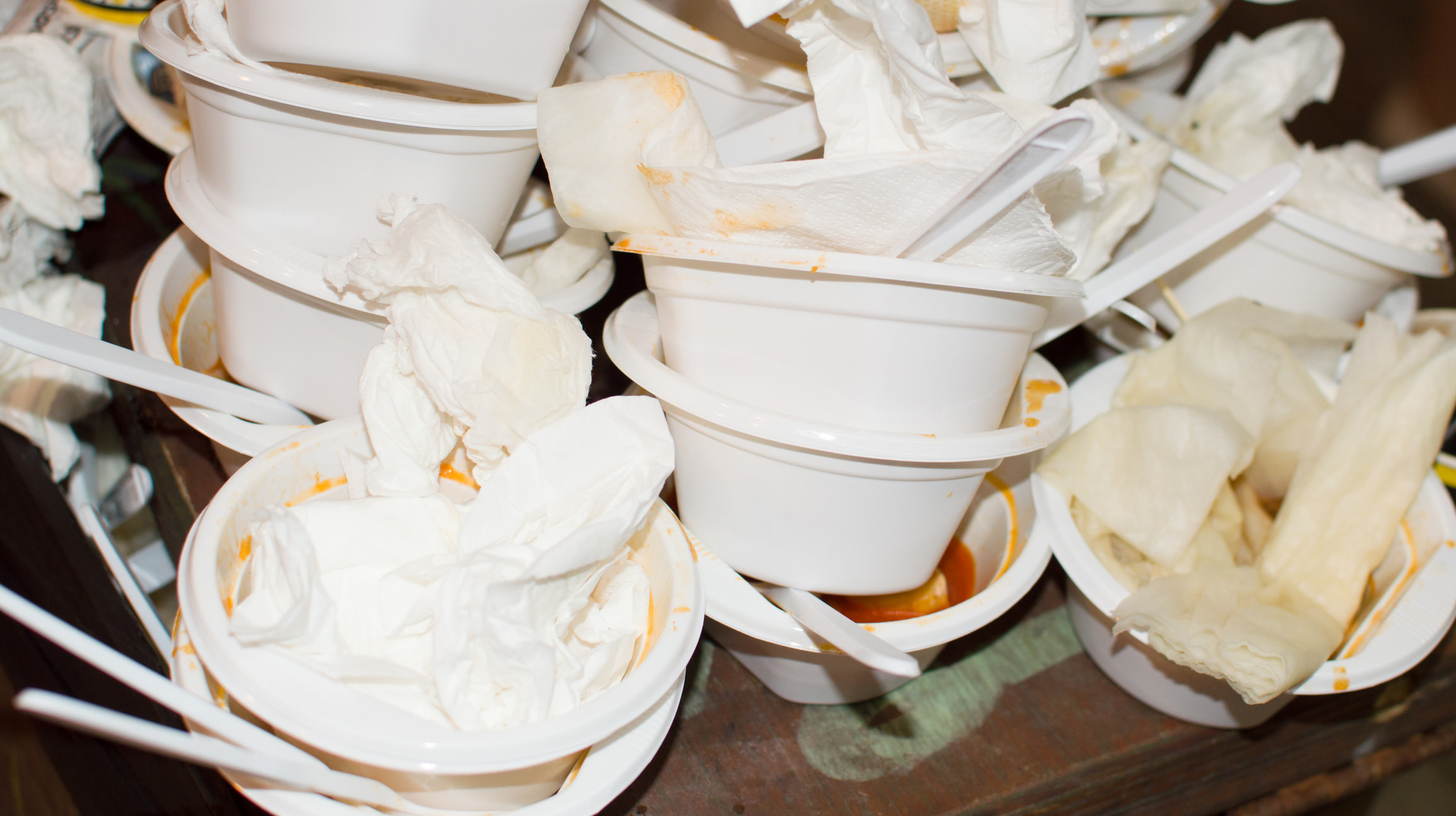How Can We Reduce Our Takeout Trash?
Working from home has been a novel experience for many of us, full of unforeseen difficulties. Washington Post food critic Tom Sietsema has not been immune. Since he started working from home six months ago, his job duties have required him to order a lot more takeout than he had before. Soon he found himself surrounded by piles and piles of plastic bags, utensils, and containers. Just for fun, he decided to keep everything for three weeks in order to see how much accumulated.
"The stream of paper, plastic, aluminum and glass that came through my door from roughly 30 orders shocked and depressed me," he writes. "I accumulated enough waste to fill two recycling containers — nearly 100 gallons of space — not to mention a torrent of guilt."
Surely this was a problem that could be solved. And so Sietsema got in touch with a group of restaurant owners and recycling specialists to find out what ordinary consumers could do to reduce the shocking amount of takeout waste.
To start with, he suggests, stop using disposable utensils. You are, after all, at home, where you presumably have forks and spoons and knives of your own. In the course of his research, Sietsema discovered that Americans use more than 36 billion disposable utensils a year. A lot of it is plastic, and a lot of it ends up in landfills or in the oceans because it's not biodegradable.
He also suggests ordering meals in bulk, either to eat over the course of several days or share with other consumers, in order to cut down on packaging.
During the pandemic, restaurants have increased their use of plastic packaging in the interest of safety, and consumers haven't objected. But now that we're six months into the stay-at-home orders and it looks like takeout will remain the norm for a while longer (and maybe even after there's a vaccine and we can pack ourselves into restaurants again), Sietsema suggests that restaurants reconsider the packaging they use for their food. He spoke with a Houston restaurant owner who switched from styrofoam containers to recyclable polypropylene containers with separate compartments for different foods and tight-fitting lids. They're more expensive, but they keep the food warmer and prevent it from spilling, and she figures that consumers can reuse the containers themselves or even return them to her. There is, in fact, a company in the Bay Area that's experimenting with ways to sanitize packaging so it can be reused. Other restaurants are using containers made of metal or glass or sugar cane.
How have you been handling your takeout waste?
